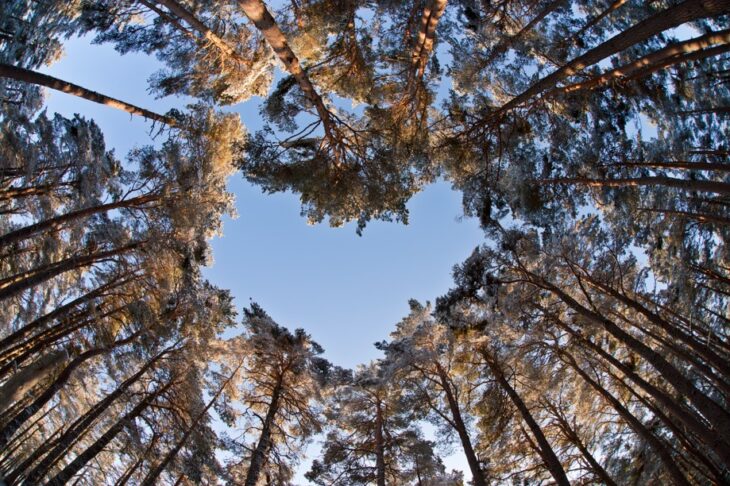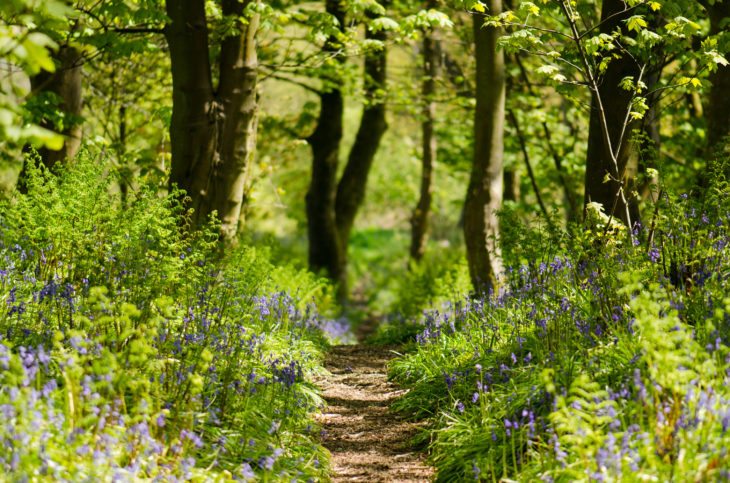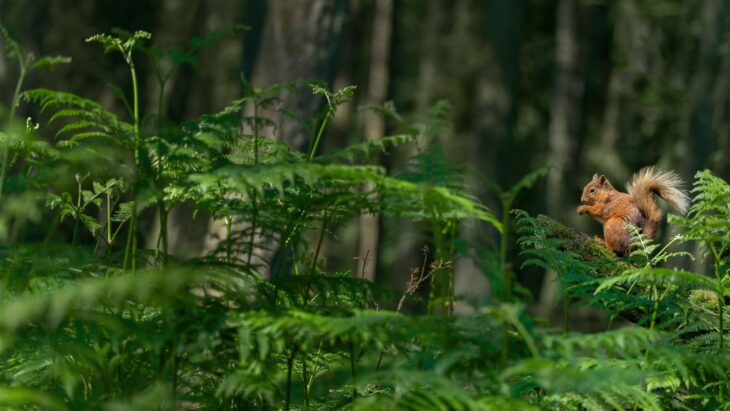Wild Isles: Woodlands
We hope you will have been inspired by the first episode of Sir David Attenborough’s new BBC series, Wild Isles, showcasing some of the magnificent wildlife that lives on our shores. For each episode, we will be sharing some of the highlights that can be enjoyed on our network of over 100 wildlife reserves across Scotland.
Catch up on episodes from the series here.

Whatever the season, a visit to any woodland awakens your senses. There’s so much to see, hear, smell, touch and even taste, no matter the weather. Trees are magic at helping you to forget your worries. Who doesn’t love balancing along a fallen tree trunk, throwing a cone or smelling cherry blossom?
Woodlands aren’t just outdoor playgrounds or refuges for humans, they provide food and shelter for thousands of plants and animals and support more invertebrates than any other habitat. Scotland’s forests and woodlands are home to 172 protected species including pine martens, Scottish crossbills, black grouse, capercaillie and an impressive 75% of the UK’s red squirrel population.
Probably, one of our most recognisable woodland flowers is the bluebell. April and May are when ancient woodlands are carpeted in a subtle hue of blue. This also coincides with the return of many of our summer breeding migrants, making a wander around an ancient woodland a tantalising tonic. If you visit before sunrise, you can catch the magical melodies of the dawn chorus sung by birds trying to attract a mate.
Set your alarm clock, pack your binoculars and enjoy some of our impressive ancient woodland reserves that will be carpeted in bluebells this spring. They are also special because the UK has half of the entire world population!
Let’s keep them special by:
- Never standing on or walking through patches of bluebells.
- Staying on marked routes or paths
- Never picking bluebells to take home.

Cumbernauld Glen, Lanarkshire
The patchwork of ancient woodland and meadows of Cumbernauld Glen is a haven for wildlife. Springtime sees the stunning bluebell carpets and returning summer birds, including pied flycatcher, redstart and wood warbler. The meadow attracts butterflies, including small pearl-bordered fritillary. Look out for a flash of blue from a kingfisher along the river.
Cumbernauld Glen forms part of the Cumbernauld Living Landscape partnership project, which the Scottish Wildlife Trust leads. Why not join the weekly Tuesday volunteering group Nature Ninjas. Activities include removing invasive species, planting native trees, wildflower meadow creation, path maintenance and litter picking. There is also a weekend volunteer group on the first Saturday and Sunday of the month too.
Find out more about the reserve here.

Carstramon Wood, Dumfries and Galloway
One of the largest semi-natural broadleaved woodlands in the area that is a Site of Special Scientific Interest and a Special Area of Conservation. The woodland canopy is dominated by sessile oak, with a hazel scrub. Ash, alder, birch and wych elm grow along the stream courses. These trees provide lush conditions for ferns and lichens to flourish in all shapes and sizes.
In spring, the wood comes alive with the sound of migratory birds such as pied flycatchers, redstarts, wood warblers and willow warblers. In May, the woodland floor is spectacularly carpeted with bluebells.
The woods abound with a wealth of wildlife, including red squirrels, and nesting sites for many woodland birds as well as rare invertebrates, which include seven nationally scarce species and ten local rarities.
Find out more about the reserve here.

Shian Wood, Argyll and Bute
An ancient wet semi-natural woodland on a low, flattened ridge jutting out of the peninsula on the south shore of Loch Creran, just north of Benderloch. In spring, the floor is cloaked with wildflowers, enticing marsh fritillary, Scotch argus and Speckled wood butterflies, and the narrow-bordered bee hawk moth.
The reserve provides an important haven for many rare moss and lichen species associated with Atlantic temperate rainforest. It is home to a variety of birds including buzzards, woodcocks, redstarts and sedge warblers, as well as roe deer.
Find out more about the reserve here.
Join us
Our reserves are free to access but as a charity, we rely on the support of nature lovers like you to keep our critical conservation work going. Join today from just £3 per month and help to protect Scotland’s wildlife for the future.
Help protect Scotland’s wildlife
Our work to save Scotland’s wildlife is made possible thanks to the generosity of our members and supporters.
Join today from just £3 a month to help protect the species you love.
Preface
We hope you will have been inspired by the first episode of Sir David Attenborough’s new BBC series, Wild Isles, showcasing some of the magnificent wildlife that lives on our …
